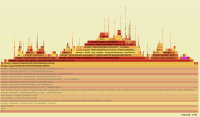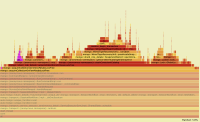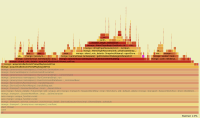-
Type:
Improvement
-
Resolution: Fixed
-
Priority:
Major - P3
-
Affects Version/s: None
-
Component/s: None
-
Catalog and Routing
-
Fully Compatible
-
CAR Team 2024-04-01
-
None
-
None
-
None
-
None
-
None
-
None
-
None
The acquireCollection() path uses maps and vectors to general-case the least-likely cases of collection acquisition. In most cases, these containers contain one item, but we're paying the cost for the worst case.
Ideally, we would refactor this code to fast-path the single-collection cases, but since that's hard, we should just try to use cheaper containers.
Ideas:
- Replace std::vector in the acquisitionRequests with absl::InlinedVector, which optimizes for the case of a small number of elements. The constructor lets us pre-allocate the vector with a single element in the common case.
- Replace stdx::unordered_map in the CollectionAcquisitions (which uses absl::node_hash_map) with absl::flat_hash_map which is more memory-efficient.
- Replace std::list in TransactionResources to use absl::InlinedVector. It's not clear that we need linked-list semantics here.
- Replace ResolvedNamespaceOrViewAcquisitionRequestsMap with a absl::InlinedVector. In the most common case, this should only be 1 element. It's also not immediately obvious that we need this to have constant-time lookup, but it does appear to need to be sorted. If we need to sort this in the multi-collection case, it would probably be cheaper to use std::sort once we've made all of the acquisition requests, rather than maintain a full tree data structure.
- causes
-
SERVER-99549 Fix lock ordering in Shard Role acquisitions
-
- Closed
-
- is related to
-
SERVER-88562 Create a linked-list container with a small element optimization
-
- Closed
-


